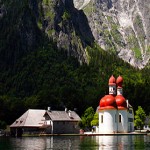Konigsaue
Archaeology »
Heritage sites»
Konigsaue
Location
Saxony-Anhalt
Country
Germany
Year of Research
1964
Culture
Konigsaue is a middle palaeolithic find spot. It dates to about 80.000 BP, the Ipswichian interglacial. The site most probably was a seasonal hunting camp at the shore of the lake Aschersleben that was completely drained at the beginning of the 18th century by an order of Friedrich II. It was discovered in 1963 by Dieter Mania during rescue excavations in the course of the lignite mining (opencast mine Königsaue 1, 1918-1977) in a depth of 17 m.Konigsaue is a middle palaeolithic find spot in the district Aschersleben-Stabfurt, Sachsen-Anhalt, Germany. It dates to about 80.000 BP, the Ipswichian interglacial. The site most probably was a seasonal hunting camp at the shore of the lake Aschersleben that was completely drained at the beginning of the 18th century by an order of Friedrich II. It was discovered in 1963 by D. Mania during rescue excavations in the course of lignite mining in a depth of 17 m. The settlement and the adjoining Bruchsberg were destroyed in 1964 by lignite mining. Three settlement layers can be distinguished, separated by limnic sediments. The first layer (A) is dated to the beginning of the interstadial. The vegetation is still turning to boreal, an open steppe type habitat, the pollen assemblage dominated by grasses. Layer C coincides with the climatic optimum. AP rises to 70%, birches and pines dominate. The Paleolithic With an area of 20,447 km² and a population of 2 Glaciation, often called an ice age, is a geological phenomenon in which massive ice sheets form in the Arctic and Antarctic and advance toward the equator. Lake Aschersleben is a former lake in Germany, northeast of the Harz Mountains, south of the town of Aschersleben. This article is about Frederick II of Brandenburg. Coal Coal is a fossil fuel extracted from the ground by mining.

